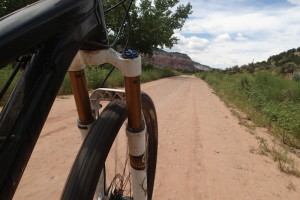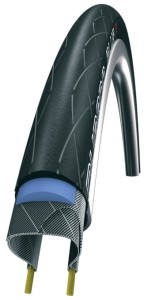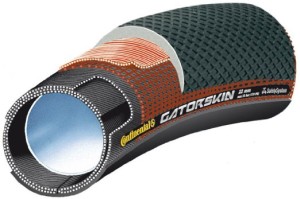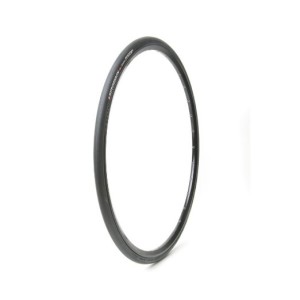
Selecting tires for your road bike can be overwhelming. Today’s manufacturers pull out all the stops when it comes to making the perfect tire. With whistles and bells like puncture protection, specialized tread, and other features, it may be difficult to know where to begin. To help you on your way, we’ve put together this guide, including an explanation of the terminology you must understand in order to make an informed decision–and our recommendations for some of the best road bike tires out there.
Click Here To See The Best Selling Road Bike Tire!
Begin with Tire Size
Before you begin tackling which tire to purchase, you’ll need to know what size to get. At first thought, tire size may seem straightforward: when it comes to diameter, it usually is. However, width is a different situation. Here’s what you need to know:
Match Your Diameter
For the most part, you’ll want to choose a tire with the same diameter as your wheels. (Occasionally, you may be able to vary from your wheel size; however, unless you know what you are doing and why you are doing it, such a change will likely spell disaster.)
If you aren’t sure how to determine your diameter, don’t fret: simply investigate your tire sidewall, where you’ll find the size marked or labeled (e.g., 700×23). These numbers indicate the tire diameter and width respectively. (The first number, 700, represents diameter in mm, while the second, 23, indicates width in mm.) These measurements may also appear in inches–for example, 27×1 ¼.
Width May Vary
Width is variable. Commonly, cyclists change widths to change ride quality. For example, a wider tire holds more air and may improve ride comfort, control and traction. A narrower tire, on the other hand, may be lighter, allowing easier climbing and improved acceleration. However, keep in mind, narrower tires may mean more flats and a rougher ride. You also want to be aware that not all bikes and rims can accomodate all widths. Generally speaking, you can jump one or two widths–any more and you may want to check with an expert.
Know Your Type
Once you know what tire size you want, you’ll need to decide what type of tire to purchase. Most commonly, you’ll want to go with a clincher or tubular type of tire. However, in today’s market, you can also find a limited array of tubeless tires.
What is a Clincher?
Also referred to as “wire-on” tires, clincher tires are the most common tire out there. They are usually the most affordable, too. These tires are made with separate inner tubes inside a rubber casing, which is generally reinforced with a rigid metal bead. The beauty of this tire is its simplicity: when you get a flat, you simply remove the tire and patch (or replace) the tube.
Understanding Tubulars
Tubular tires are constructed differently. Instead of having a separate inner tube, tubular tires consist of an inner tube that is sewn within the tire’s casing. The tires are then glued onto the rims (and, thus require specially-designed rims). Also known as “sew-up” tires, tubulars tend to be lighter and consequently offer better acceleration. Most pro-tubular cyclists also claim they corner better. Tubulars are generally confined to high-end performance and racing bikes. If you want to see how to change a tubular tire, check out the video below.
The Rise of the Tubeless
While popular for some time with mountain bikers, tubeless tires have only recently begun to gain traction with road cyclists. These tires are similarly designed to auto tires: they have no tube inside. Instead, the tire and rim work together as a sealing system. Advantages include the ability to run with much lower air pressure, improved traction, and a decreased risk of flats. Many even feature the capability to self-heal punctures (usually in the form of latex-based sealants). However, you’ll want to understand that they can be rather pricey.
Other Features You Should Consider
Other features you may want to consider include foldability, tire thread count (tpi), and tread.
Foldability
Foldable tires are made with flexible bead materials (most commonly Kevlar®) instead of inflexible wire bead. As you might guess, this innovation allows them to be folded for easy storage and transport. It also makes them incredibly light. The downside? Price.
Tire Thread Count (TPI)
If you’ve ever bought linens, you are probably familiar with the term “thread count.” You’ll also know that higher thread count means higher cost. Tires that feature higher threads per inch (TPI)–sometimes referred to as edges per inch (or EPI)–are lighter and more resistant to puncture. Road bike TPIs usually range from 60 (though some may be as low as 20) to around 320 for high-performance racing tires.
Tire Tread
Tire treads vary and you’ll want to consider your needs. While increased tread means increased grip, it also means more resistance and, consequently, a sacrifice of speed.
Our Tire Picks
If you still aren’t certain where to start, check out our picks of some of the best road bike tires out there!
Clincher: Schwalbe Durano Plus

Click here to see the best price on Amazon.com
With a 5mm Smartguard protective layer between the casing and tread, the Schwalbe Durano Plus features 201 TPI and is protected from nearly any debris you may come up against on the road. Built with puncture protection in mind, the Durano Plus manages not to sacrifice speed or stability. Its dual-compound tread combines center strip low-rolling resistance with tackier shoulder grip to keep you flying (safely) around those corners. Available on Amazon from $40.92.
Tubular: Continental Sprinter Gatorskin

Click here to see the best price on Amazon.com
This durable, puncture-resistant tire features Continental’s Duraskin sidewall and Safety System Breaker. With 180 TPI, the Sprinter Gatorskin (as its name implies) balances toughness with lightness and flexibility. A great choice for a training tire, it is guaranteed to go the distance while giving you a comfortable ride.
Tubeless: Hutchinson Fusion 3

Click here to see the best price on Amazon.com
The Hutchinson Fusion 3 tubeless features 127 TPI and incredible self-healing capabilities. Its triple-compound rubber means higher puncture resistance and a long-wearing, fast-rolling grip.
Leave a Reply